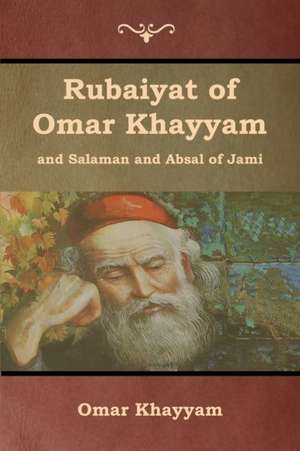Rubaiyat of Omar Khayyam and Salaman and Absal of Jami
Autor Omar Khayyam, Et Al. Jamien Limba Engleză Paperback – 13 iun 2019
| Toate formatele și edițiile | Preț | Express |
|---|---|---|
| Paperback (1) | 76.59 lei 6-8 săpt. | |
| Bibliotech Press – 13 iun 2019 | 76.59 lei 6-8 săpt. | |
| Hardback (1) | 167.79 lei 6-8 săpt. | |
| Bibliotech Press – 13 iun 2019 | 167.79 lei 6-8 săpt. |
Preț: 76.59 lei
Nou
Puncte Express: 115
Preț estimativ în valută:
14.66€ • 15.22$ • 12.22£
14.66€ • 15.22$ • 12.22£
Carte tipărită la comandă
Livrare economică 22 martie-05 aprilie
Preluare comenzi: 021 569.72.76
Specificații
ISBN-13: 9781618955371
ISBN-10: 1618955373
Pagini: 102
Dimensiuni: 152 x 229 x 6 mm
Greutate: 0.16 kg
Editura: Bibliotech Press
ISBN-10: 1618955373
Pagini: 102
Dimensiuni: 152 x 229 x 6 mm
Greutate: 0.16 kg
Editura: Bibliotech Press
Notă biografică
Guiatadim Abu Fate Omar ibne Ibraim Caiam de Nixapur, melhor conhecido como Omar Caiam, foi poeta, matemático e astrônomo persa dos séculos XI e XII. As numerosas transformações políticas e etnológicas no mundo islâmico trouxeram altos e baixos para o desenvolvimento da astronomia e da matemática.
